Mallorca Travel Guide
Sunny, seductive and easy on the soul, Mallorca is the largest island in the Balearic archipelago and one of the premier beach holiday destinations in the Mediterranean. The rugged, ravishing coastline of lush cliffs, golden sands and sapphire seas is the stuff of legend, but it's far from the only highlight on this dazzling island.
Mallorca took off as a tourist paradise in the 1960s when a development boom spawned the building of hundreds of high-rise hotels, apartment blocks and shopping centres, which now line most of the island's coast. The capital, Palma, retains some of its historical flavour, however, sporting grand mansions and a magnificent Gothic cathedral in its bustling old centre. The northwest coast, too, still offers some secluded coves below the peaks of the Serra de Tramuntana mountain range, and several quaint old towns and villages remain untouched by the commercial development common on the island.
If travellers visit Mallorca for sun and fun on the beautiful beaches, as most people do, it's worth heading off for a tour of the island by car, or even bicycle, to discover the romantic fishing villages, historic monasteries, monuments, museums and spectacular landscapes the lie away from the hubbub. The interior is largely the preserve of a thriving agricultural community, dotted with windmills, as well as olive and almond trees.
Palma de Mallorca has the island's international airport and is the main ferry terminus, receiving ferries from Valencia and Barcelona on the mainland. It's also the hub of the extensive transport system that covers Mallorca, with bus services linking all main settlements, and train lines to Inca and the scenic tourist train to Soller.
The best way to get around is by car and there are several rental agencies in Palma, though reservations need to be made in advance but in high season. Everything on the island is within three hours drive from the capital.
Things to do in Mallorca
Mallorca is a famous beach destination where the main attractions for many visitors are the lovely beaches and beautiful jewel-coloured water. Sun-worshippers will adore the endless stretches of idyllic coastline, with Palma Nova, Illetes, and Es Trenc on the southeast coast being the most popular.
Mallorca is, however, also steeped in a rich and wonderful Mediterranean history and has some fascinating attractions that will appeal to all kinds of travellers. Visitors will love the Catedral El Seo, Castell del Bellver and the Museo d'Art Espanyol Contemporani in Palma, while the Banys Arabs, the only surviving Moorish building in the city, is a fascinating attraction.
History buffs should take a trip to Santa Margalida, which boasts more than 150 archaeological sites, and visit the Son Real Necropolis, where Phoenicians were buried from the Iron Age to Roman times. Fascinating historic towns such as Valldemossa, Lluc, Pollensa, Arta and Alcudia leave tourists spoilt for choice.
Those looking for a taste of the outdoors as well as some history will love the Castell d'Alaro, Mallorca's most popular hiking trail. It begins from the town of Alaro and winds up to a ruined 15th-century castle and hilltop chapel, which offers breathtaking views over the island and sea. The Mallorca Caves are also worth a visit for nature lovers, as they have impressive underground lakes, stalactites and stalagmites.
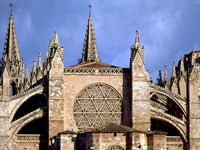
La Seo Cathedral
Palma's magnificent Catalonian Gothic cathedral is a landmark of the city and stands in the old town overlooking the ocean. The cathedral is actually called the Cathedral of the Saviour (Catedral del Salvador) but is situated on the Plaza de la Seo. Commonly referred to as La Seo, it forms part of a UNESCO World Heritage Site and was built on the site of an existing ancient mosque and ancient Roman forum. Construction on the Romanesque Cathedral began in 1140 and there have been numerous rebuilds, additions and renovations since then, including an extensive restoration in the second half of the 20th century, when Roman and Muslim remnants were excavated and exposed.
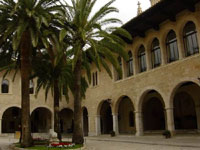
Palau de l'Almudaina
Opposite the cathedral in Palma stands an austere fortress palace that was erected by the Moors and later became the residence of the kings of Mallorca. The Moors built the fortress in 1281 and it was converted into a royal residence at the end of the 13th century. However, evidence suggests that the Moors themselves built on an existing Roman fort. The palace is still officially a royal residence, though very seldom occupied, and is occasionally used for royal functions and events. Inside, most rooms and corridors are bare but there are some beautiful Flemish Gobelin tapestries on display as well as a few antiques, art works and suits of armour.
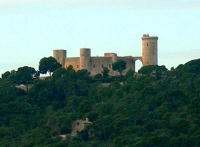
Castell de Bellver
Built in the 14th century and surrounded by a double moat, this round hilltop castle was the summer residence of the kings of Mallorca. While once serving as a prison, today it contains Palma's Municipal Museum, which displays archaeological artefacts and models of excavations. The unusual castle sits atop a lovely park area and its highlights include spectacular views and photo opportunities. Visitors can explore a series of chambers upstairs above the museum below, and should not miss the prisoner's graffiti etched into the stonework, which is visible if guests climb up to the roof. The Bellver Castle is on the route of the Palma City open-top sightseeing buses, but the walk up through the forest from Placa Gomilla is pleasant and not too strenuous.
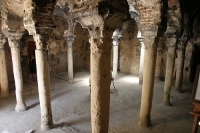
Banys Arabs
The only surviving Moorish building in Palma is the bathhouse of Banys Arabs, which is located in the city's medieval quarter. It contains an elegant horseshoe-arched dome chamber supported by 12 columns, and fronted by a lovely little garden with picnic tables. Although this is a small attraction that basically consists of two empty chambers (hence the low admission cost), the old architecture is graceful and photographers should enjoy capturing the romantically dilapidated walls and columns. The baths are worth visiting to get some impression of the character of the old city, as they are sadly all that remains.
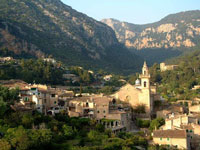
Valldemossa
In 1838, Frederic Chopin arrived in the small town of Valldemossa with his lover, George Sand, to stay in a former monk's cell in the Cartoixa Reial monastery and carry on their affair away from the eyes of Paris. The shocked locals shunned the sickly Chopin and Sand, and the couple were so unhappy that their relationship never recovered from the wet, windy and miserable winter in the monastery. Today the cells occupied by the lovers are open to visitors. The library and old pharmacy can also be visited and there is a small art museum with works by Picasso, Miro, and Juli Ramis. Valldemossa is one of the prettiest villages in Mallorca. It's quiet and traditional, with narrow cobbled streets and a backdrop of forested hills.
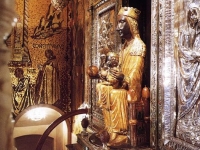
Santuari de Lluc
The remote mountain village of Lluc lies about 20 miles (32km) beyond Soller in a valley that has been an important place of pilgrimage since the 13th century. Lluc became Mallorca's most sacred site when a shepherd boy discovered a dark wooden statue of the Virgin in a cleft in the rock. The miraculous statue somehow returned to its cave three times after being placed in the local church. Now the statue, known as La Moreneta, has been encrusted with precious stones and resides in its own chapel, receiving pilgrims and tourists who come to pay homage each day.
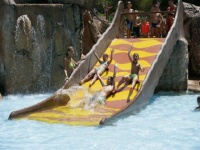
Aqualand Mallorca
Aqualand is one place that is not to be missed by families on holiday in Mallorca. Children of all ages and parents alike will have a grand time splashing in the pools, riding the slides, floating on tubes, splashing in a mini water park or jumping in the wave pools. Those who don't relish excitement can enjoy the lazy river or the Jacuzzis, and the whole family will have fun on the surf beach and group rides. Lockers and sun loungers are available to rent for a small extra charge and there are various options for food and refreshments in the park. Benches and beach areas provide space for relaxation in between the thrills and spills.
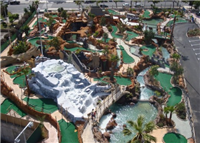
Katmandu Park
Katmandu Park is a theme park and mini-golf complex that's proven wildly popular among younger visitors to Magaluf. Featuring cutting-edge technology, The House of Katmandu provides a thrilling and interactive haunted house experience for youngsters. The Asylum, aimed at older visitors (12 years and older), takes passengers on a scary journey through an abandoned mental asylum; the interactive motion ride Desperado is a comical cowboy gun slinging experience; and there is a 4D cinema to enjoy. The 36-hole (two 18-hole courses) Expedition Golf area of the theme park is hugely impressive, featuring fun and challenging courses, elaborately ornamented and themed, that even adults will find tough to master.
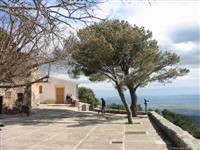
Castell d'Alaro
Mallorca's most popular hiking trail is the climb from the town of Alaro up to a ruined castle and hilltop chapel, which offers panoramic views of the sea and plains as far as Palma. From Alaro the walk takes about two hours to complete depending on fitness levels. A castle has stood on this site since Moorish times and the fortress was once so impregnable that the Moors managed to hold out against the Christian conquest for two years. Later, in 1285, Mallorcan independence fighters tried to defend the castle against Alfonso III of Aragon, but they were defeated and burned alive for their impudence. The castle ruins now visible on the hilltop date from the 15th century and dominate the landscape. They seem to grow out of the rock and are rather romantic and picturesque, fuelling the imagination.
Things to do with kids in Mallorca
Many travellers associate the island with wild parties and package holidays for young tourists hell bent on having a good time, but Mallorca's quieter resorts are fantastic places for families with children to take a summer holiday. The combination of great tourist amenities and historic sightseeing will keep everybody entertained and happy.
Puerto Pollensa and Cala d'Or are quiet and the beaches uncrowded, making them great locations for the kids to build sand castles and play with buckets and spades. However, visitors should remember to pack the sunscreen, as the temperatures in summer months can be searing.
El Arenal boasts an enormous waterpark, as do Alcudia and Magaluf. Parents can also take the kids go-karting in Magaluf, or enjoy a family horse-riding trip to see the island from Alcudia. A trip to Marineland, in Costa d'en Blanes, to watch the dolphins and sea lions perform, or be mesmerised by the sharks in the aquarium, is a must.
On days when outdoor activities are not an option, many of the hotels feature kids clubs, or children's indoor playgrounds, and there are other options such as Mallorca Aquarium in Porto Cristo. Of course, the city of Palma has many attractions for a rainy day, but those who want to stick to their chosen resort won't get bored either.

Aqualand Mallorca
Aqualand is one place that is not to be missed by families on holiday in Mallorca. Children of all ages and parents alike will have a grand time splashing in the pools, riding the slides, floating on tubes, splashing in a mini water park or jumping in the wave pools. Those who don't relish excitement can enjoy the lazy river or the Jacuzzis, and the whole family will have fun on the surf beach and group rides. Lockers and sun loungers are available to rent for a small extra charge and there are various options for food and refreshments in the park. Benches and beach areas provide space for relaxation in between the thrills and spills.

Katmandu Park
Katmandu Park is a theme park and mini-golf complex that's proven wildly popular among younger visitors to Magaluf. Featuring cutting-edge technology, The House of Katmandu provides a thrilling and interactive haunted house experience for youngsters. The Asylum, aimed at older visitors (12 years and older), takes passengers on a scary journey through an abandoned mental asylum; the interactive motion ride Desperado is a comical cowboy gun slinging experience; and there is a 4D cinema to enjoy. The 36-hole (two 18-hole courses) Expedition Golf area of the theme park is hugely impressive, featuring fun and challenging courses, elaborately ornamented and themed, that even adults will find tough to master.
Shopping
Palma de Mallorca is the centre of the shopping scene, and has sprawling malls, shop-lined streets, and daily stalls and markets where tablecloths or leather goods can be scooped up for a song with a bit of haggling. The main shopping street in Cala d'Or, Avinguda Tagomago, is a bustling flurry of souvenir shops, chic boutiques, leather shops and galleries. The stretch of shops in Pageura known as El Bulevar features supermarkets, clothing shops and souvenir shops, while the pedestrian promenades on Cala Millor and Magaluf's seafronts are jam-packed with stalls selling buckets and spades and tourist trinkets.
Markets are a great place to shop on the island of Mallorca and the Monday market in Calvia is the place to go for porcelain, jewellery and leather goods, as are the Wednesday markets in Andratx in Palma and Thursday's Inca market. Travellers should brush up on their bargaining skills before visiting, though. Near Cala Millor, the Friday markets in Son Servera and Monday markets in Monacor are a great place to find unique goods and fresh produce, as well as souvenirs such as espadrilles shoes, embroidery and basketwork. The weekly Sunday market in Pollensa's old town is one of the liveliest and definitely worth a wander for everything from local crafts and olive wood carvings to ceramics and lace.
Nightlife
Though not as raucous as its Balearic neighbour Ibiza, Mallorca is still famed for its nightlife, most of which is centred around its holiday resort towns. Of these, Magaluf is the most vibrant, closely followed by el Arenal and Palma.
From raging bars to quieter pubs and tavernas, Magaluf has it all. The resort's infamous Punta Ballena strip is literally overrun by partygoers in the summer time, wending their merry way from one seething watering hole to another. The ever-popular BCM Planet Dance can accommodate up to 5,000 people and regularly features big-name DJs behind the decks. There are many other popular clubs and dance and live music venues as well.
Paguera, Puerto Pollensa, Cala Millor, S'Illot and Sa Coma are all quieter resorts, which cater more to families. Visitors shouldn't expect much pulsating nightlife in these areas, as the evening's entertainment will more likely consist of a pleasant paseo (stroll) along the waterfront, before heading out to a tavern for a few quiet drinks and a relaxed meal.
Mallorca Climate and Weather
Mallorca, or Majorca, enjoys a typical Mediterranean climate, with hot, dry summers and mild winters. The island has an ideal climate for holidaymakers with little rain and average temperatures usually kept comfortably below 86ºF (30ºC) even in mid-summer. Temperatures remain warm in the spring and autumn and, even in winter, rarely drop much below 50ºF (10ºC). Water temperatures range from 64ºF (18ºC) in May to 79ºF (26ºC) in August, making Mallorca ideal for water sports and ensuring that swimming is possible throughout spring and autumn as well as summer.
Mallorca doesn't get much rain, but autumn is the wettest season, with 40 percent of rain falling between September and November. There is also some rain in spring, between March and May, and in winter, between December and February. Outside of autumn rainfall is usually sporadic and light and shouldn't be too disruptive to holiday plans.
Summer, between June and August, is the peak tourist season in Mallorca and the best time to visit. The island is also pleasant to visit during the mild spring and autumn seasons, especially for those who prefer to avoid the crowds. However, some rain is possible at these times. During winter some of the restaurants and amenities at the resorts may close.
Spain travel info
Electricity
The electrical current is 230 volts, 50Hz. European-style two-pin plugs are standard.
Language
Spanish is the official language, but English is widely understood in areas frequented by tourists. Catalan, Galician and Basque are spoken in the relevant areas.
Money
Spain's official currency is the euro (EUR), which is divided into 100 cents. Money can be exchanged at bureaux de change and major hotels, but banks give the best rates. All major credit cards are widely accepted at most hotels, restaurants, and shops. ATMs are widespread and are generally the cheapest and most convenient method of obtaining money.
Tipping
Hotel and restaurant bills usually include service charges, but additional tips are welcomed for services rendered. In established restaurants, tips of about 10 percent are expected. Drivers of metered taxis expect small tips and it's customary to tip about 5 to 10 percent for most services, including guides.
Health
There are no health risks associated with travel to Spain, and no vaccination certificates are required for entry. Medical facilities are good but comprehensive travel insurance is always advised. Spain has a reciprocal health agreement with most EU countries that provides emergency health care for EU travellers on the same terms as Spanish nationals. After Brexit, the Global Health Insurance Card (GHIC) replaced the European Health Insurance Card (EHIC) for UK citizens. The GHIC allows UK citizens access to state healthcare during visits to the EU. The GHIC is not valid in Norway, Iceland, Liechtenstein or Switzerland, nor is it an alternative to travel insurance. EU travellers should take a European Health Insurance Card (EHIC). Travellers should take any medication they require along with them, in its original packaging and accompanied by a signed and dated letter from a doctor detailing what it is and why it is needed.
Safety
Most visits to Spain are trouble-free except for occasional street crime. Petty crime, such as pickpocketing and purse snatching, is most common in larger cities, particularly during holidays, festivals and weekends, and especially on public transport and in tourist areas. Thieves may work alone or in groups; visitors should be wary of strangers who offer or ask for help of any kind, or inform them of a stain on their clothes, as these are often ways of providing a distraction for accomplices. There are also scams involving letters for outstanding traffic fines or Spanish lottery winnings. Travellers can avoid incidents if they exercise all the normal precautions.
Local customs
Smoking in public places is banned and stiff fines will be imposed for smoking in areas such as enclosed public spaces, areas where food is prepared and sold, public transport, non-smoking areas of bars and restaurants, and any places that cater for children. Drinking alcohol in the streets of Madrid and the streets of the Canary and Balearic Islands is illegal.
Doing business
The business culture in Spain is slowly shifting but, for now, it's entrenched in tradition and it can take some time for foreigners to gain a foothold in the Spanish working world. It's important never to undermine authority as hierarchy is central to Spain's business world. Managers tend to make decisions without considering input from their colleagues.
A strong emphasis is placed on social status, character attributes, and personal pride. Success is often hinged upon being well-dressed, honourable, and dignified, while also exhibiting great social skills. Business meetings are generally conducted face-to-face and can go on for long periods, as Spaniards prefer long deliberations in order to avoid uncertainty in corporate dealings. Business meetings in Spain tend to tread a fine line between personal and formal.
Conducting business in Spain can entail navigation through a lot of red tape and bureaucracy. Spanish is the language of business, but some of the larger multinationals conduct meetings in both English and Spanish. Business hours are often quite varied, but generally open by 9am and close in the mid-evening with a two-hour lunch break during the early afternoon.
Business attire is quite conservative with men wearing dark or linen suits, shirts and silk ties. Women should wear modest dresses or tailored suits. Brand names or labels attract affirmation from colleagues and associates.
After the conclusion of successful negotiations, gifts are appropriate. Gifts should be of high quality and, when receiving a gift, it should be opened in front of the giver. Business cards are important and should be bilingual. Meetings are best scheduled for mid-morning, and establishing a formal yet personable environment is important before beginning. Meetings often occur over lunches and dinners.
Duty free
Travellers from EU countries are allowed the following items duty free: 800 cigarettes or 400 cigarillos or 200 cigars or 1kg tobacco; 110 litres beer; 90 litres wine; and 10 litres spirit. Travellers from non-EU countries may have 200 cigarettes or 100 cigarillos or 50 cigars or 250g tobacco; 1 litre spirits, 4 litres wine, and 16 litres beer.
Communications
The international access code for Spain is +34. WiFi is widely available; travellers can purchase local SIM cards for unlocked phones or use eSIMs if their cellular providers support it on their networks.
Passport & Visa
The borderless region known as the Schengen area includes the following countries: Austria, Belgium, Czech Republic, Denmark, Estonia, Finland, France, Germany, Greece, Hungary, Iceland, Italy, Latvia, Lithuania, Luxembourg, Malta, The Netherlands, Norway, Poland, Portugal, Slovakia, Slovenia, Spain, and Sweden. All these countries issue a standard Schengen visa that has a multiple entry option, allowing the holder to travel freely within the borders of all. Non-EU nationals must hold a return or onward ticket, all necessary documents for onward travel and sufficient funds. It is highly recommended that passports have at least six months' validity remaining after the intended date of departure from Spain. Immigration officials often apply different rules to those stated by travel agents and official sources.
Entry requirements
United States citizens require a passport valid for three months beyond the period of intended stay. No visa is required for stays of up to 90 days within a 180 day period.
British citizens require a passport valid for three months beyond the period of intended stay. No visa is required for stays of up to 90 days within a 180 day period.
Canadian citizens require a passport valid for at least three months beyond period of intended stay. No visa is required for stays of up to 90 days within a 180 day period.
Australian citizens require a passport valid for at least three months beyond period of intended stay. No visa is required for stays of up to 90 days within a 180 day period.
South African citizens require a passport valid for at least three months beyond period of intended stay. A visa is required.
Irish nationals require a valid passport, but a visa is not necessary.
New Zealand citizens require a passport valid for at least three months beyond period of intended stay. No visa is required for stays of up to 90 days within a 180 day period.
Useful contacts
Spanish Tourist Office, Madrid: www.spain.info.
112 (General).


